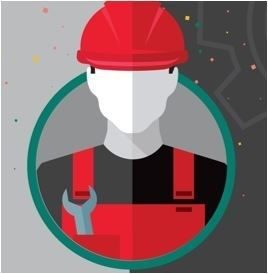Proportioning the Compressed Air Dryer
Trying to figure out which air dryer capacity is best for you? Here are some factors to consider. Read More…
 Did you know that one of the
largest costs for industrial manufacturers is compressed air? That’s right – anywhere from 12% to 40% of a facility’s total energy costs
come from its compressed air installation. This means that finding innovative ways (no matter how small) to increase compressed air
efficiency can amount to big savings over the long run! Items like leak elimination, air audits, reduced pressure bands, and
reducing unloaded running hours are some of the most popular ways to decrease energy usage – but there are many other actions that you can
take. Read on to discover additional ways to reduce your costs and make sure your compressor system is running as efficiently as possible!
Did you know that one of the
largest costs for industrial manufacturers is compressed air? That’s right – anywhere from 12% to 40% of a facility’s total energy costs
come from its compressed air installation. This means that finding innovative ways (no matter how small) to increase compressed air
efficiency can amount to big savings over the long run! Items like leak elimination, air audits, reduced pressure bands, and
reducing unloaded running hours are some of the most popular ways to decrease energy usage – but there are many other actions that you can
take. Read on to discover additional ways to reduce your costs and make sure your compressor system is running as efficiently as possible!
Once you have the answers to the above, make sure that you select your compressor based not only on initial cost, but on the lowest total lifecycle costs
3. Consider New Compressor Technologies. Air compressors are long term investments that will play a significant role in your business for years to come. The average factory changes air compressors every 7-10 years, meaning that the initial capital expenditure is only a fraction of how much your compressor will cost you in total. 70% (or more!) of your air compressor’s lifecycle cost will come down to its energy usage.
4. Make Sure You Have the Right Compressor Type. Many applications in the food and beverage, electronics, automotive, textile, and pharmaceutical industries require oil-free air to guarantee product integrity and quality (often specified as Class 0). Oil-free compressed air technology will help to avoid expensive filter replacements, cut the cost of oil condensate treatment and reduce energy loss from pressure drop in filters and, in food & beverage applications, the use of expensive food grade lubricants.
If you have a very large-scale application, you can also consider a centrifugal compressor, given that these offer energy efficiency in process air or in bulk air applications presenting a flat load; they're also ideal for providing a baseline flow in mixed installations with VSD screw compressors.
5. Consider VSD (Variable Speed Drive). Most production processes require different levels of demand in different periods, which may mean that the compressor is running off-load or idle (not producing any compressed air) for long periods of time. Great savings can be made if a fixed speed compressor can be replaced by a variable speed drive unit as it only produces compressed air as and when required. This also minimizes offload running of the compressor, which is known to waste energy. A VSD compressor saves an average 35% energy and a VSD+ unit can save as much as 50% compared to a fixed speed unit, even at full load.
Through it all, remember that the best way to take care of your compressed air system is by investing in regular preventative maintenance! This will sustain the efficiency that you have gained by purchasing a new compressor or improve the performance of an older unit.
Ash Air has been around in New Zealand since 1979, and we’ve grown into a nationwide company with international support and a
reputation for quality and reliability.We look after all things compressed air for your business!
Ash Air's range of Chicago Pneumatic, Alup, Pneumatech, and Quincy compressors are used extensively around the world in industries
ranging from oil and gas to food, automotive and farming, and we bring you these world class compressors here in the land of the long white
cloud.Our technicians are compressed air equipment experts and are dedicated to addressing customer needs. Supported by a 13 locations
nationwide, Ash Air offers one of the widest selections of compressed air equipment and parts available today in New Zealand.
With Ash Air compressors, you can count on reliability and high performance for even the most demanding applications. We focus our
efforts on the following:
Talk to the team today:
Proportioning the Compressed Air Dryer
Trying to figure out which air dryer capacity is best for you? Here are some factors to consider.
Read More…
Maintenance budget: 8 factors to consider
Just like any other equipment, a compressed air installation also requires the necessary maintenance work during its entire
lifespan. Even though maintenance costs are only about 5 to 10% of a machine's annual operating costs, failure to budget for
maintenance can have potentially disastrous consequences.
Read More…
The air dyer is one of the most ignored cooler in the system. A dirty condenser will cause water in the lines, or worse it will cause
complete dryer failure.
Read More…
Do you have an idea for our #expertcorner? Let
us know!
Who we are and how Ash Air can help your business!
Reliability and Efficiency
Read more from our #expertcorner